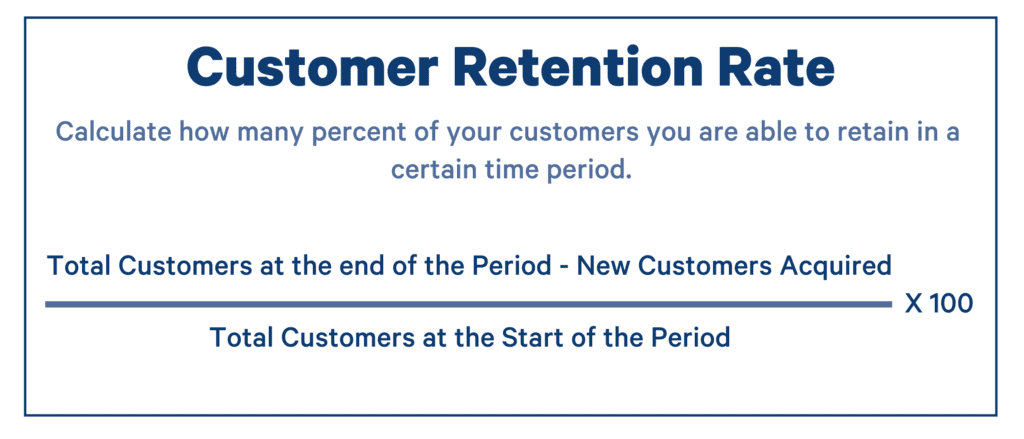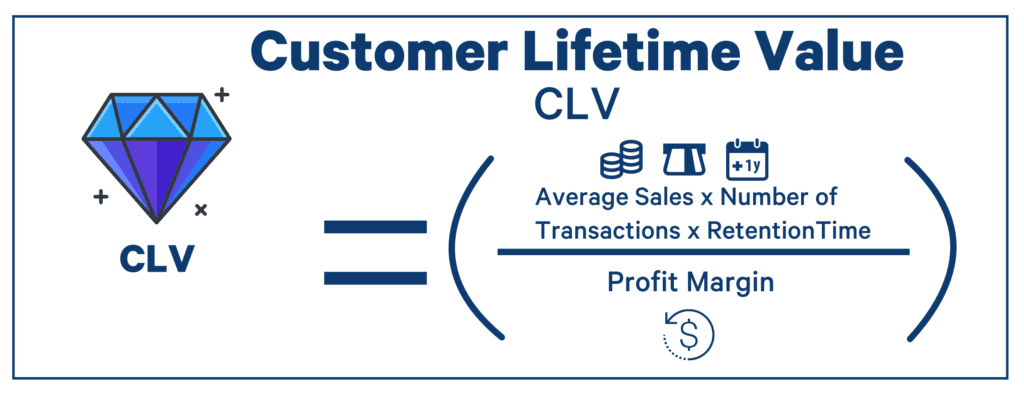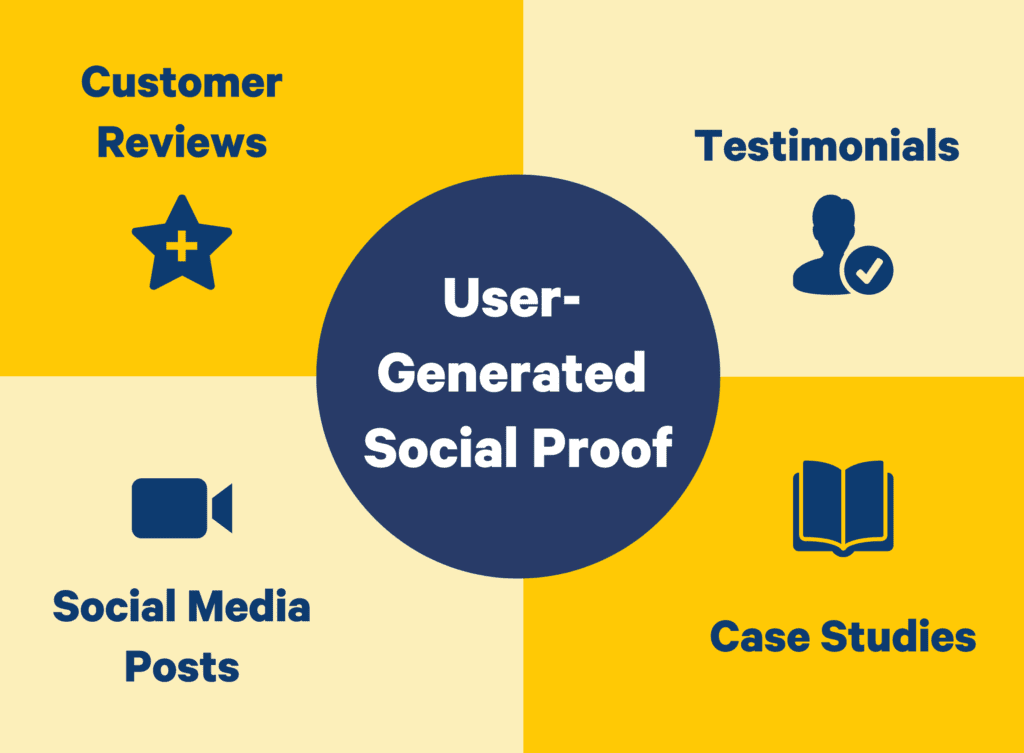The Top Customer Retention Strategies That Actually Work


If you’re in business — any kind of business — you have probably heard that acquiring a new customer costs more than keeping your existing ones. It’s an age-old and time-tested adage that has proven factual no matter what you’re selling or if you’re in B2B or B2C.
Trying to convince someone to purchase something new they haven’t tried before is one of the most challenging things to do in business. That’s why many companies' marketing budgets are so high.
Your business needs new customers to survive and grow — no doubt about that. But you can’t forget about them once you acquire them. Customers have way too many options today to assume that once they’ve purchased what you sell, they will keep coming back.
Once you have a few customers, you should reallocate some of your marketing budget to retain as many as possible. Reselling them more of what they bought or new and exciting products in the future is five to twenty-five times easier than acquiring and selling to new customers.
This article will dive into everything you need to know about customer retention, how to calculate it, why it is essential, and the top customer retention strategies that actually work.
What is Customer Retention?
A customer retention strategy is a business plan to keep customers returning after making their first purchase, and to keep making additional purchases.
As you can imagine, there are many reasons why a company should focus on customer retention. Some of these reasons include the following:
- It is less expensive to keep a customer than to acquire a new one (a 5% customer retention rate increase can lead to 25%-95% more profits).
- Retained customers are more likely to purchase more products or services from the company.
- A high customer turnover rate can damage a company's reputation.
As you can see, customer retention is essential to the success of any business.

How To Calculate Customer Retention?
The basic formula for calculating customer retention rate involves dividing your total customers at the end of a particular time by the ones you had at the beginning.
Customer Retention Rate = [(Total Customers at the end of the Period - New Customers Acquired) / (Total Customers at the Start of the Period)] x 100 (to be expressed as a percentage)

Why Is Customer Retention Essential To Businesses?
Here are some of the benefits of customer retention for businesses:
Improved customer lifetime value
On average, it costs five times more to attract a new customer than to retain an existing one. So, keeping your customers happy and engaged is a very cost-effective strategy.

Greater brand loyalty
When customers are loyal to your brand, they’re more likely to stick around even in tough times. This can help your business ride out periods of turbulence and emerge more robust than ever.
Increased word-of-mouth marketing
Happy customers are more likely to tell their friends and family about your business, which can result in powerful word-of-mouth marketing that helps you reach new audiences at no cost.
However, you need to engage in one or more customer retention strategies to get these benefits.
Let’s talk about the best customer retention strategies you can employ to keep more of your customers as long-time clients and reduce customer churn.
The Top Customer Retention Strategies You Need To Try
As we have seen, there are many benefits to keeping the customers you have — the main one being the cost.
Spending the same high number to get one new customer after another is a recipe for financial disaster.
You need to take some of that money (or extra money) in your marketing budget and allocate it to ensure you keep some of your customers coming back for years.
Not only will you save money in the long run, but you’ll also have more money to spend on growing your business.
To keep an eye on how your customer retention strategies are working for you, watch these three key performance indicators (KPIs).
- Customer retention rate (CRR): See the calculation above
- Repeat purchase ratio (RPR): ([Number of customers who've purchased before / Total number of customers] × 100 (%)
- Customer churn rate (CCR): Number of customers who quit using your service or a product in a specified time / average number of customers over that same time frame
Here are the top customer retention strategies to keep more clients that actually work.
1. Maintain an Elite Level of Customer Service
No company wants to deal with unhappy customers, but unfortunately, it is a reality that all businesses face from time to time.
Providing exceptional customer service is key to mitigating the damage caused by unhappy customers. You can not only turn an unhappy customer into a happy one, but you can also convert them into loyal customers.

2. Turn unhappy customers into happy ones with smooth customer service
One of the reasons why exceptional customer service is so crucial for customer retention is that it can help reduce the negative impact of adverse events.
It has been proven that people are more likely to remember and talk about negative events than positive ones.
As such, if you can provide excellent customer service in the aftermath of an adverse event, you can help minimize the damage that has been done.
You can start a smooth customer service process by providing all the necessary contact information on your website, such as an email address, contact forms, or even a call now button.
Another way to provide seamless customer service is to use social media channels to respond to your customer queries faster. For example, you can use WhatsApp as a chat on your website for enhanced customer support.
This way, your customers will find it easier to reach out to you.
3. Build trust and earn recommendations
Another reason exceptional customer service is critical for customer retention is that it helps build trust.
When customers are happy with the level of service they receive, they will be more likely to trust your company and recommend it to others. They might even leave public testimonials that you can use in your marketing efforts.
Conversely, if your customers have a bad experience with your company, they may be less likely to trust you in the future. They may even tell their friends and family about their negative experiences.
4. Get Personal
Personalization is a critical aspect of customer retention. By providing personalized service and messages, you demonstrate to your customers that you value them and their business.
In fact, customers these days expect a personalized experience. If you fail to keep the customer journey consistent and logical, you risk losing your clients.
Personalization can make a huge difference in whether or not customers return to your store in the future.
If you succeed, you might be able to build customer loyalty, which can lead to increased sales and revenue over time.
5. Use Omnichannel Marketing Strategies
Customer retention is vital to any business, and omnichannel content marketing is critical to customer retention.
Companies can use different communication channels to reach customers in an even more personalized way, leading to higher engagement and loyalty.
In 2021, omnichannel campaigns drove a 494% higher order rate than single-channel campaigns. Using multiple social media and marketing campaigns also translates into loyalty.
Statistics show omnichannel campaigns resulted in a 90% higher retention rate than single-channel campaigns. Omnichannel marketing puts the customer at the center of the movement rather than the business.
6. Share User-generated Content
Regarding customer retention, sharing user-generated content (UGC) is critical.
By showcasing your customers’ experiences and feedback, you can create a community of brand advocates who are excited to promote your products and services.
UGC also helps potential buyers feel more confident in their purchase decisions, as they can get a real sense of what it’s like to use your product or service.
So how can you start sharing UGC?
If you sell a physical product, ask your customers to share photos of it in action on social media.
You can also highlight customer reviews on your website or blog.
If you sell a digital product or service, you can share screenshots of customer feedback or testimonials on social media or your website.
No matter what business you run, celebrate your customers’ successes.
This content will help build trust and encourage other customers to stay around for the long haul.

7. Have a Solid Onboarding Experience
Onboarding is one of the most critical aspects of customer retention.
By providing an excellent onboarding experience, you can ensure that your customers have a positive first experience with your business.
A good first impression will set the stage for future interactions and could help to keep them as customers for the long term.
Here are a few key things to remember when creating an onboarding experience for your customers.
Provide lots of info
Ensure you are providing all the necessary information they need to get started, including helpful instructions, walkthroughs, and contact information for customer service if they need assistance.
Building a knowledge base is also a good idea. That way your customers can easily search for the guides they need and solve common issues by themselves.
Make it easy to follow
If your website, social media, and mobile apps are simple enough to navigate, your customers may become more relaxed and likely to stick with your business.
Keep things simple and easy to understand, and you'll be more likely to retain your customers.
Celebrate each milestone along the way
When a customer completes an essential step in the onboarding process, send them a congratulatory message or offer them a reward for their efforts.
A little effort here can help keep them motivated and encouraged as they continue throughout your website.
If you do the right things from the beginning, you will have a much better chance of retaining the customer.

8. Set and Define Customer Expectations
Setting and defining customer expectations is critical to customer retention.
When customers know what to expect from you, they are more likely to be satisfied with your services.
There are a few ways to set and define customer expectations.
The most common way is to outline what you will and will not do in your terms of service or contract. You can also communicate your standards through your website, social media, and other marketing materials.
It's essential to be clear and concise when setting customer expectations. Your customers should never feel like they are guessing what you will or won't do.
If you need help setting customer expectations, ask your team for assistance. Creating and meeting customer expectations is key to providing a great customer experience.
9. Take the Time To Build Trust
Trust is one of the most critical factors in customer retention. Customers who don’t trust your brand won’t be loyal to it.
Building trust between your company and your customers takes time and effort, but it’s worth it in the long run.
There are many things you can do to build trust with your customers. For example, you can consistently deliver on your brand promise, be transparent and honest with them, and respond quickly to their questions and concerns.
If you can create a relationship of trust with your customers, they’ll be more likely to stick around and buy from you again.
Take the time to build trust, and you’ll see the benefits in terms of customer retention.

10. Listen Carefully To Your Disgruntled Customers
No business can keep 100% of its customers happy, and that's okay.
However, if you're looking to reduce customer churn, you need to listen to your customers when they have negative things to say.
Listening and responding to customer complaints can guide you on what not to do in the future. A key indication that something needs to be done is that you are receiving the same complaints repeatedly.
There are plenty of reputation management software tools that can give you a detailed look at customer sentiment.
You get a fresh perspective on your business when you pay attention to what customers say.
You may even decide to overhaul your product or business plan entirely based on the feedback you can get.
Even if you need to take such a drastic step, you will have proof that this is what your customers want.
Conclusion
The bottom line is that customer retention is critical to the success of any business. By implementing a few of the abovementioned strategies, you can ensure that your customers are happy and coming back for more.
Remember your target audience's needs and preferences, and ensure you’re putting your best foot forward in customer service. With a little effort, you can create a loyal customer base that will keep you thriving for years.
This article is written in collaboration with Andrew Dunn.